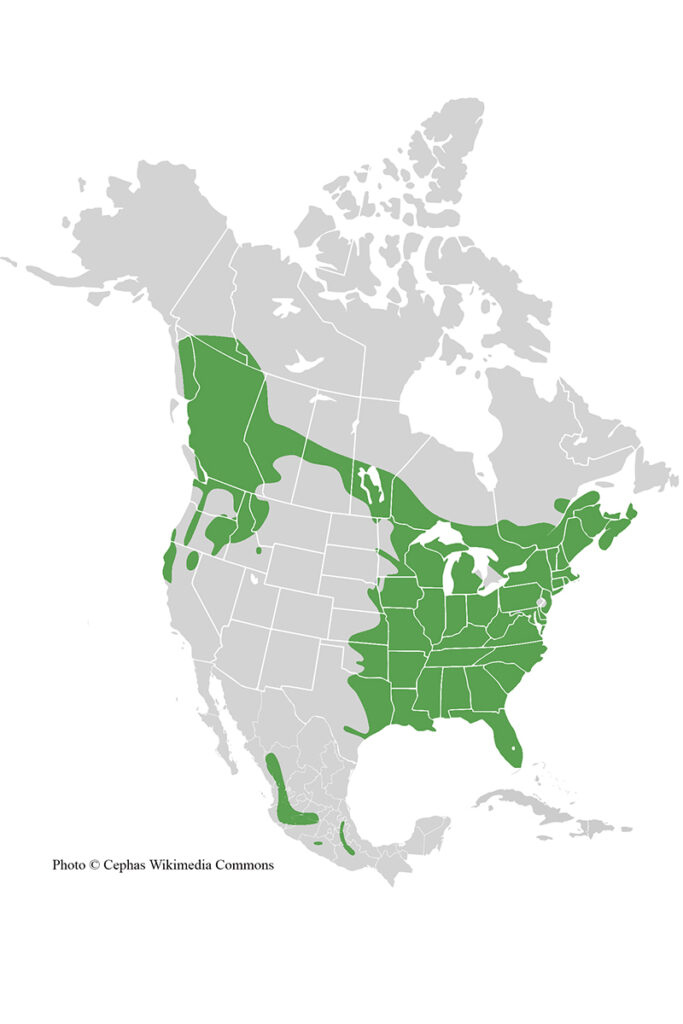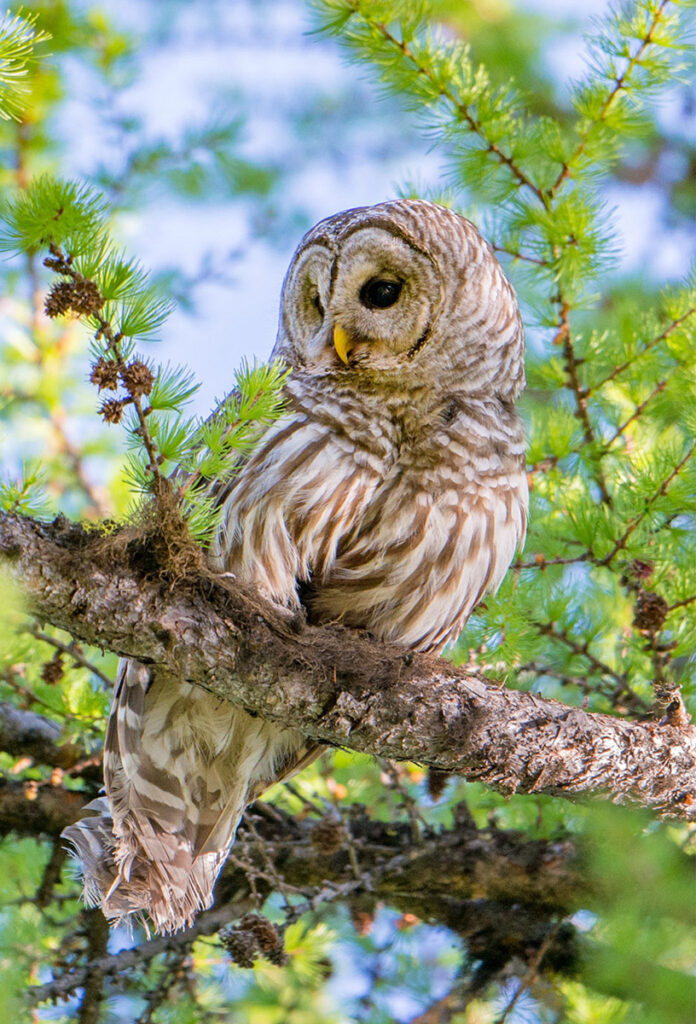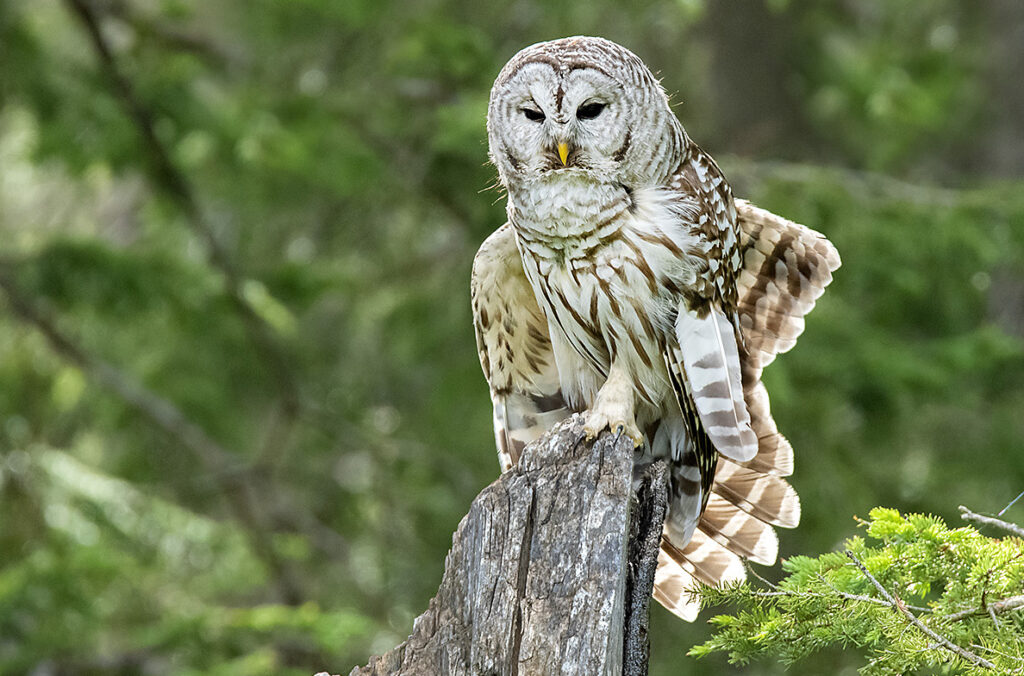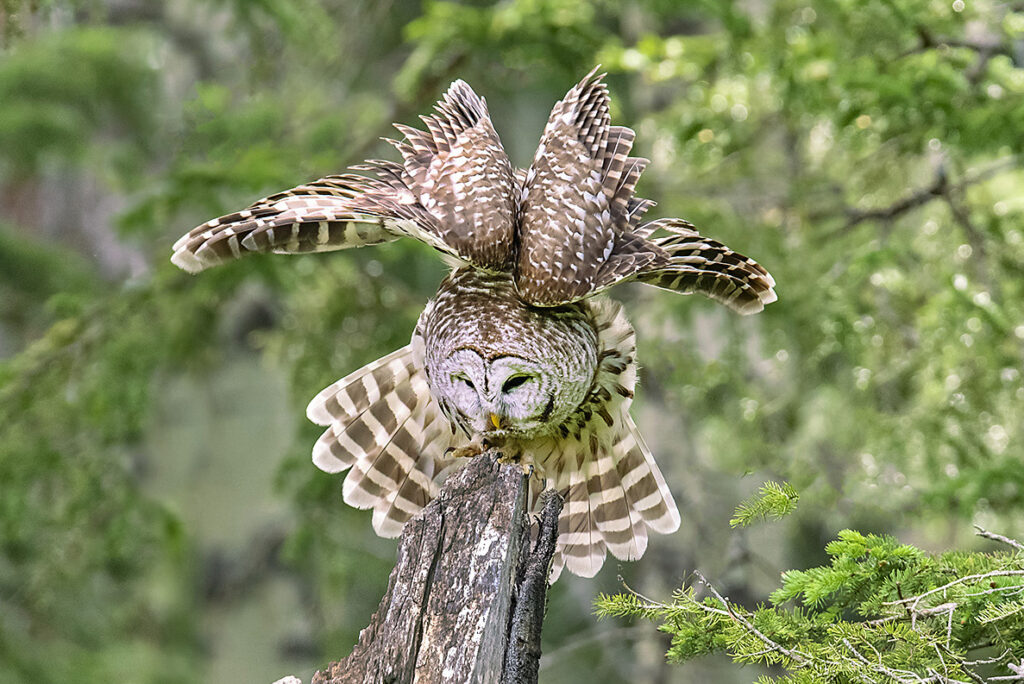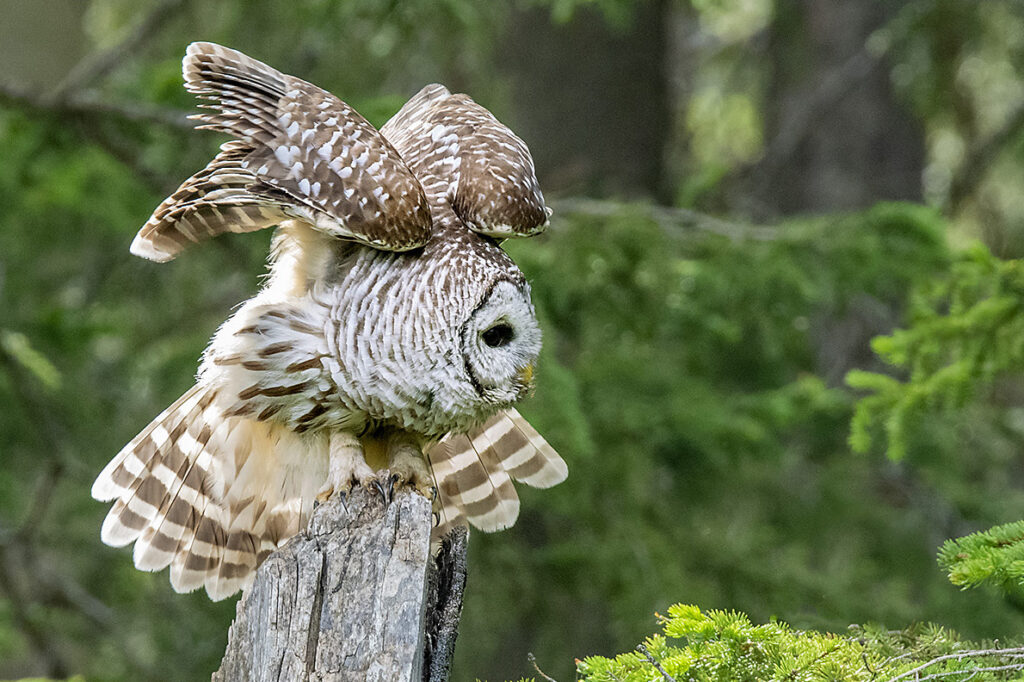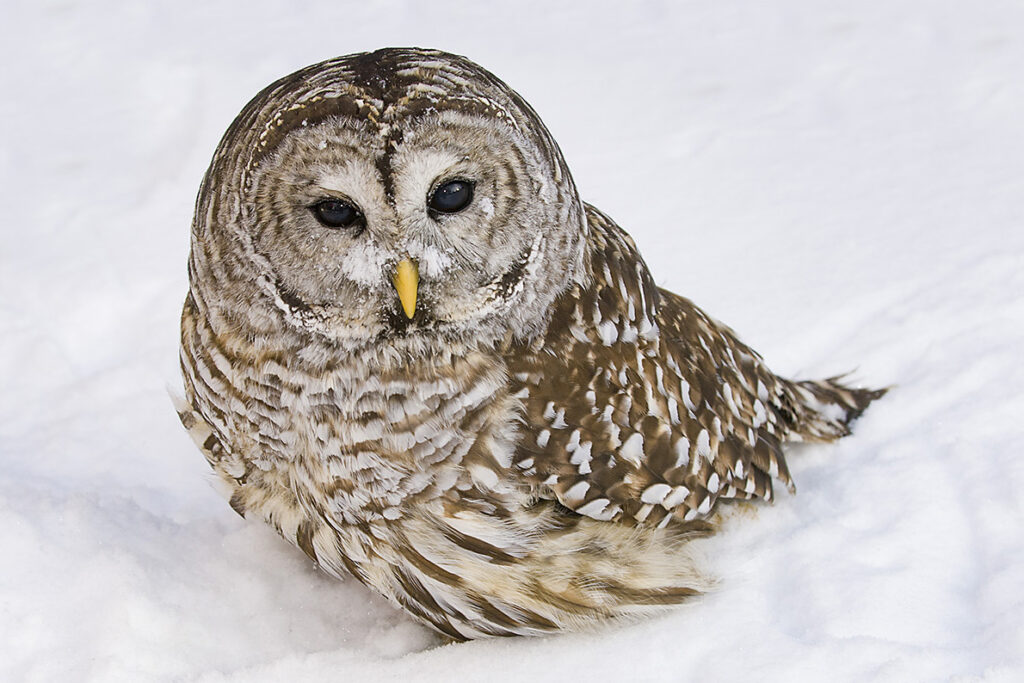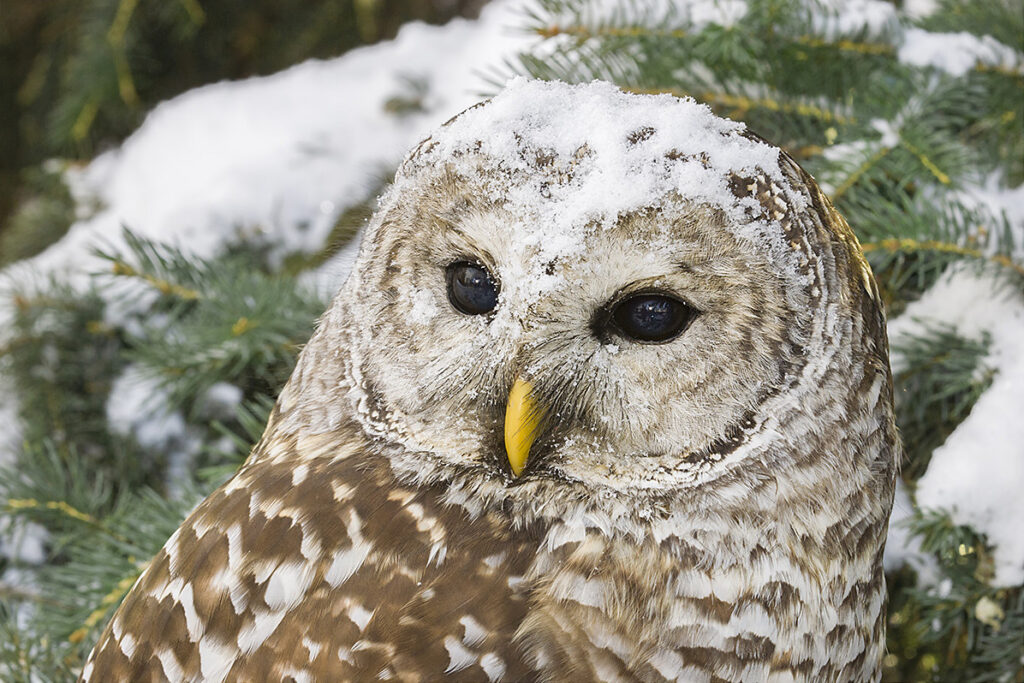The barred owl (Strix varia), a native of North America, was originally a year round resident of the deciduous forests and swamps of the eastern United States and Canada. Beginning in the late 1880s, the owl began to slowly expand its range north and west across the boreal forests of Canada, eventually reaching the Pacific Northwest and northern California. The owls’ arrival in British Columbia brought them into direct contact with their close relative the endangered northern spotted owl. The barred owl, being more aggressive, usually dominates the more timid spotted owl, often displacing it and further imperilling this threatened species. There are now fewer than 100 pairs of spotted owls in British Columbia.
The barred owl hunts mainly at night and during the subdued light of dusk and dawn, although when an opportunity arises it will certainly target prey in the daytime as well. It, like most species of owls, is a sit-and-wait hunter, perching motionless on an elevated perch waiting for a hapless victim to reveal itself before noiselessly swooping down to capture it. The barred owl is a true generalist predator hunting a variety of small mammals up to the size of rabbits, as well as frogs, toads, lizards, snakes, and birds as large as grouse. It’s also known to boldly wade into shallow water to catch fish and crayfish. In Alberta, the barred owl’s diet consists of 46% mammals, 25% birds, 25% amphibians, and 4% invertebrates. In a continent-wide study, the opportunistic barred owl was reported to consume 2,234 different prey items!
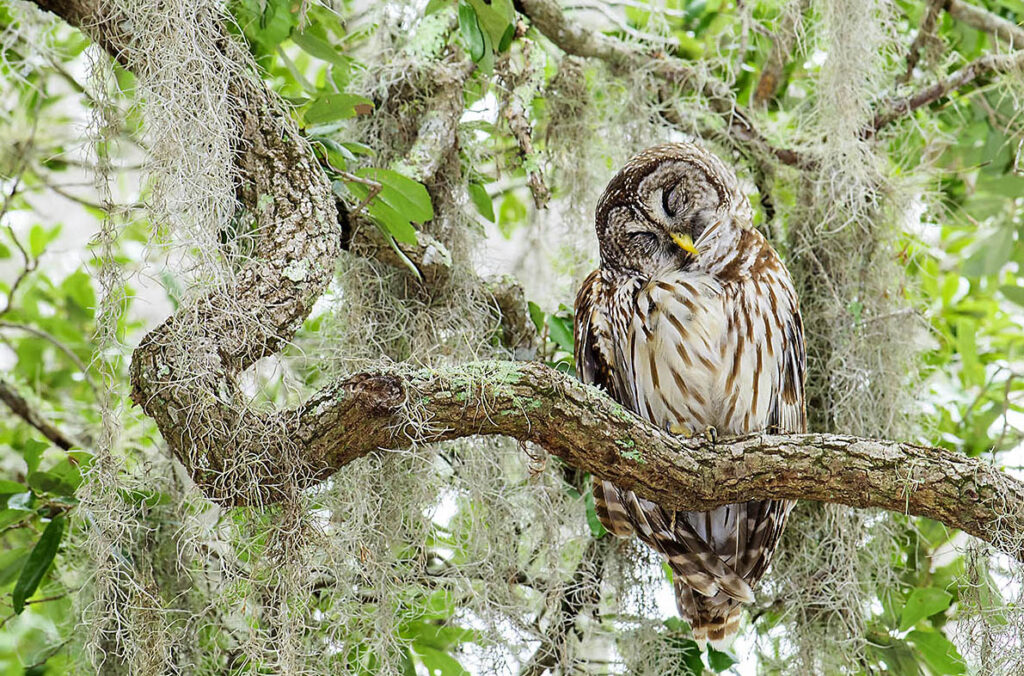
This owl in a Louisiana cypress swamp is preening the hard-to-reach feathers on its upper chest.
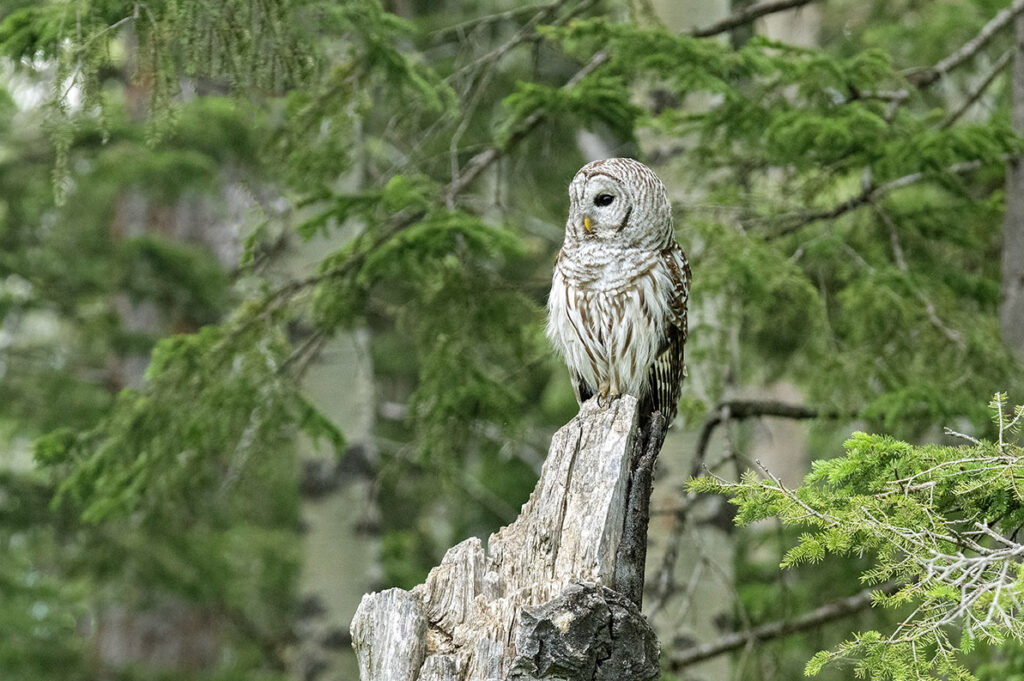
Many barred owls spend the day tucked against a tree trunk hoping that their cryptic plumage hides them from the mobbing attention of songbirds. This particular owl was mobbed by several noisy American robins, a Steller’s jay, a common crow, and a northern flicker.
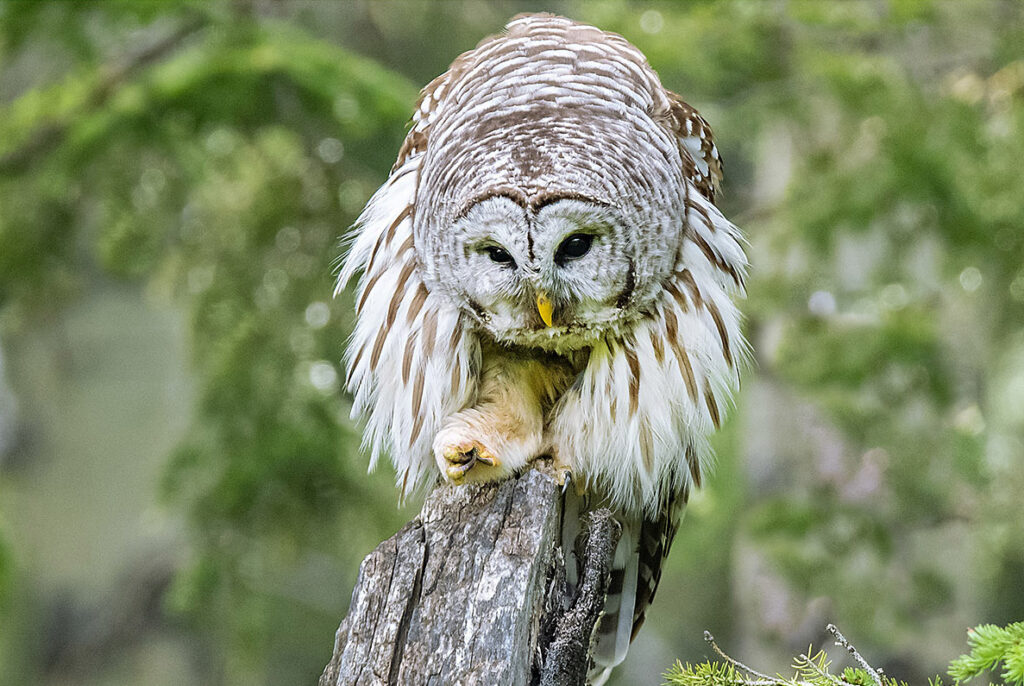
The long, sharp talons on a barred owl enable it to penetrate the dense coat of feathers on the birds that it feeds upon.
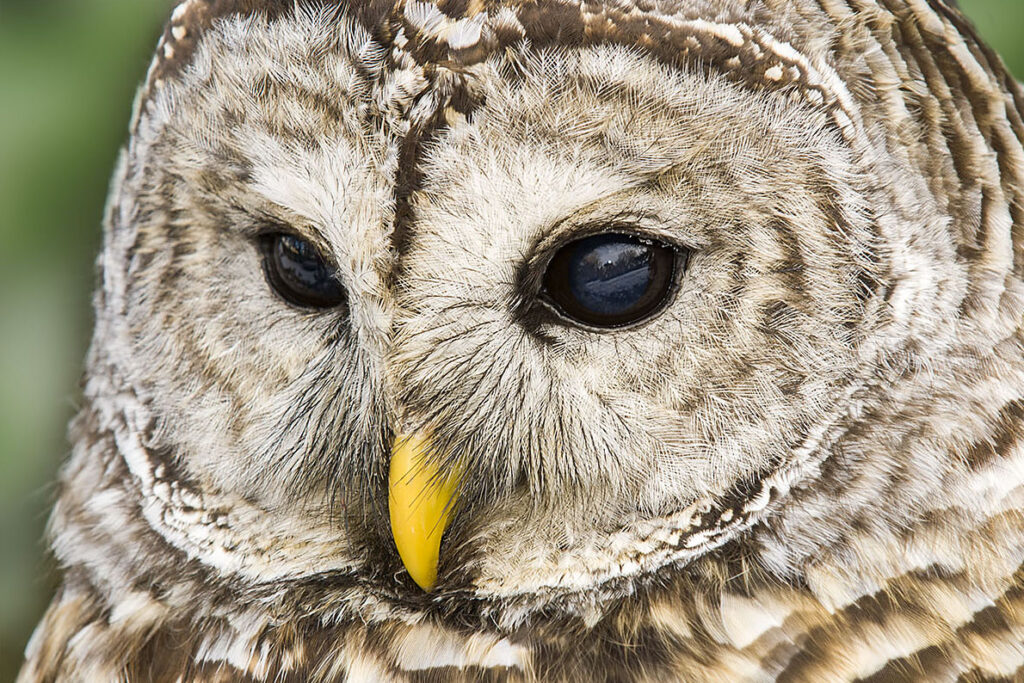
The feather facial disk on a barred owl helps to focus sound waves and enhance its hearing.
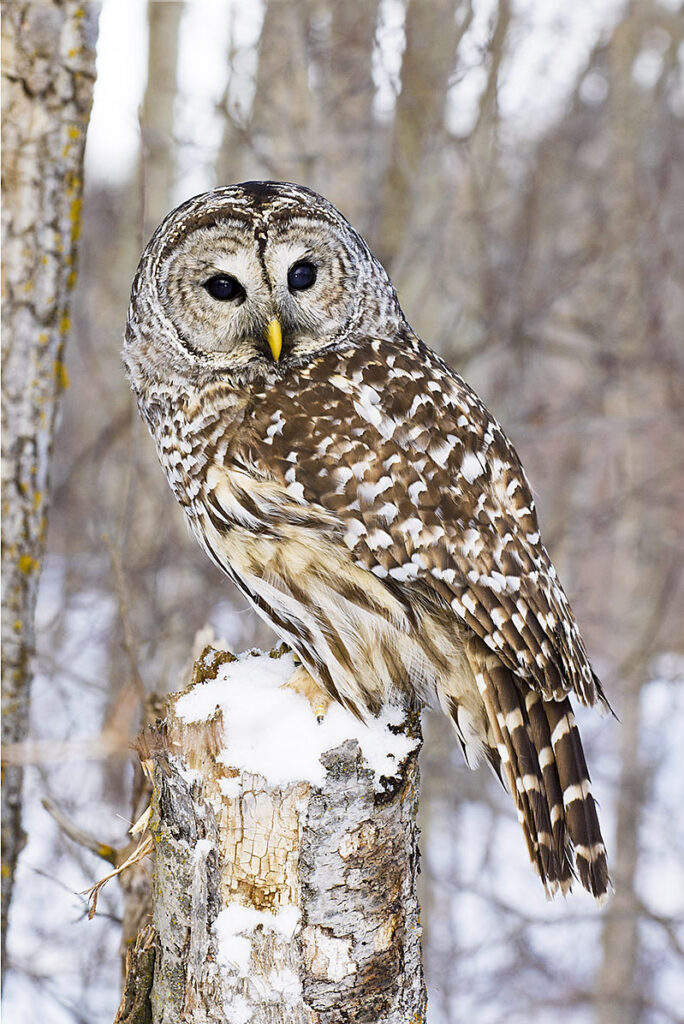
A pair of barred owls are strongly territorial and aggressively defend their plot of forest throughout the year. Male and female barred owls have similar plumage, although the female is up to one third heavier than her male partner.
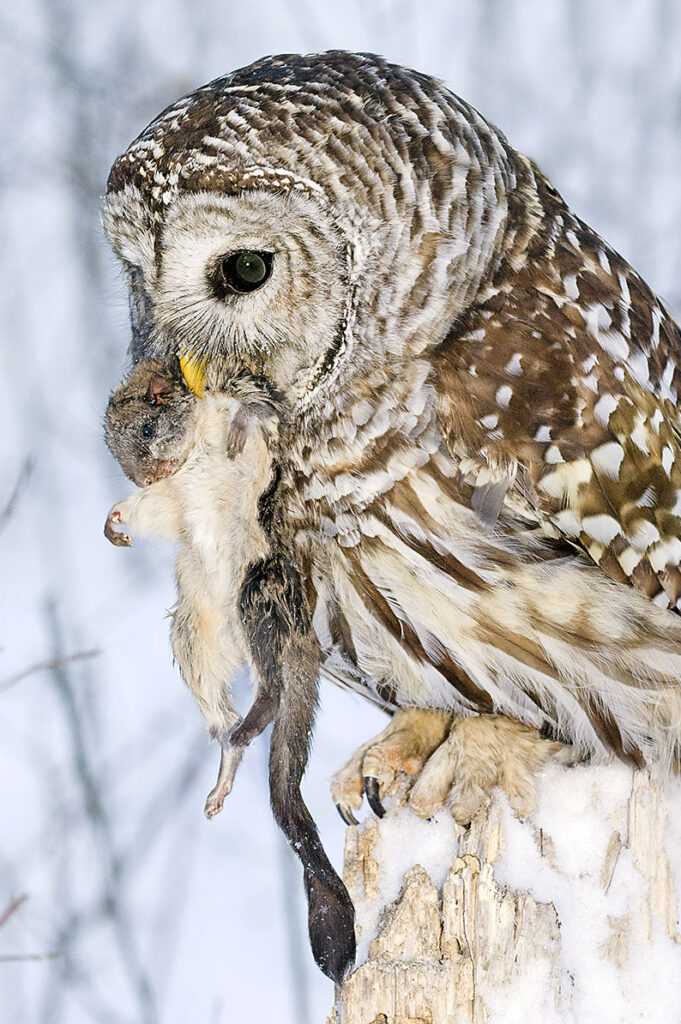
This barred owl has caught a northern flying squirrel. Owls typically kill their victims by biting their head or neck rather than with the lethal penetration of their talons as hawks and eagles do.
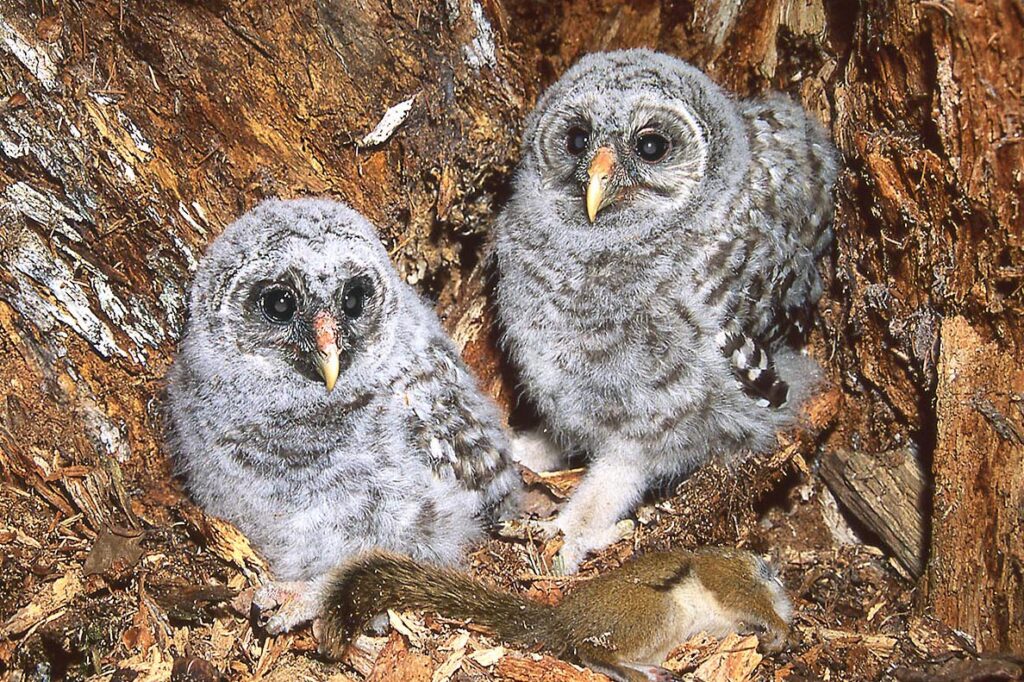
The barred owl is one of the largest cavity-nesting birds in North America, relying on the natural cavities in rotting snags and tree trunks. These owl chicks were raised in a broken snag, and had a red squirrel meal awaiting them.
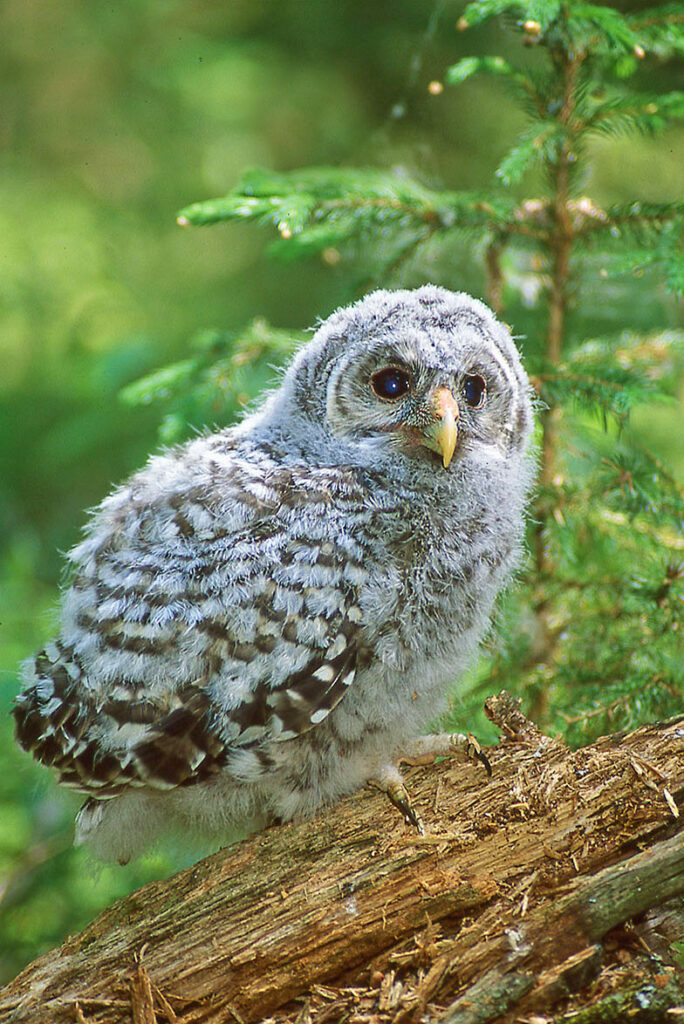
Young barred owl chicks leave the nest when they are roughly four to five weeks old. They still can’t fly at that age and perch separately on nearby branches where they continue to be fed by their parents for another two months.
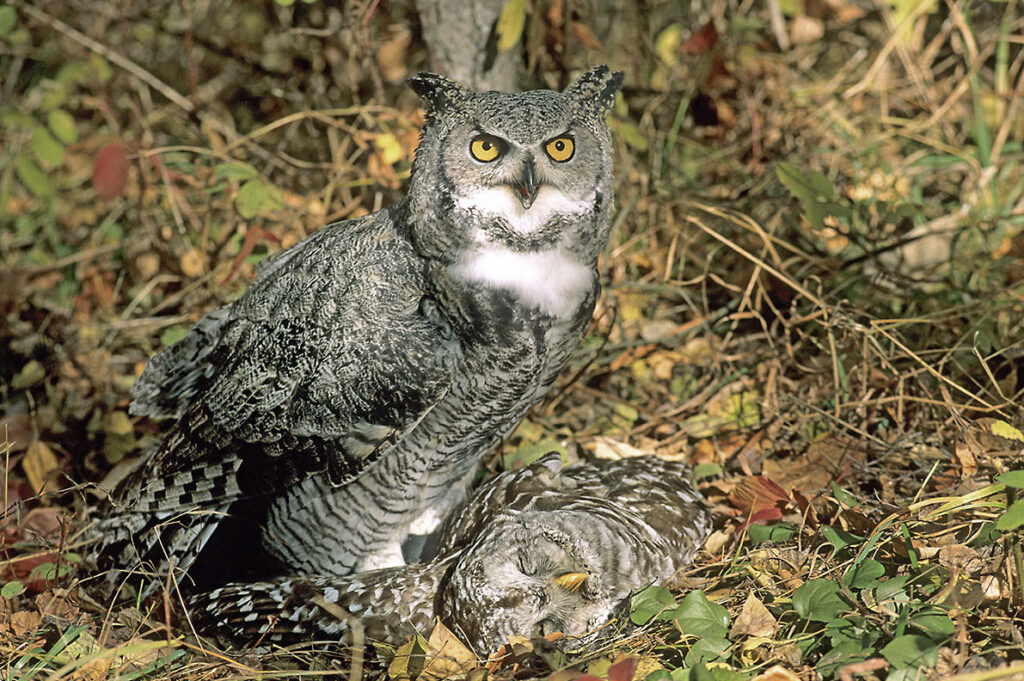
The great horned owl, sometimes known as the “night shark”, poses the greatest threat to an adult barred owl. This predatory owl is known to hunt at least nine different species of its kin.
About the Author – Dr. Wayne Lynch
For more than 40 years, Dr. Wayne Lynch has been writing about and photographing the wildlands of the world from the stark beauty of the Arctic and Antarctic to the lush rainforests of the tropics. Today, he is one of Canada’s best-known and most widely published nature writers and wildlife photographers. His photo credits include hundreds of magazine covers, thousands of calendar shots, and tens of thousands of images published in over 80 countries. He is also the author/photographer of more than 45 books for children as well as over 20 highly acclaimed natural history books for adults including Windswept: A Passionate View of the Prairie Grasslands; Penguins of the World; Bears: Monarchs of the Northern Wilderness; A is for Arctic: Natural Wonders of a Polar World; Wild Birds Across the Prairies; Planet Arctic: Life at the Top of the World; The Great Northern Kingdom: Life in the Boreal Forest; Owls of the United States and Canada: A Complete Guide to their Biology and Behavior; Penguins: The World’s Coolest Birds; Galapagos: A Traveler’s Introduction; A Celebration of Prairie Birds; and Bears of the North: A Year Inside Their Worlds. In 2022, he released Wildlife of the Rockies for Kids, and Loons: Treasured Symbols of the North. His books have won multiple awards and have been described as “a magical combination of words and images.”
Dr. Lynch has observed and photographed wildlife in over 70 countries and is a Fellow of the internationally recognized Explorers Club, headquartered in New York City. A Fellow is someone who has actively participated in exploration or has substantially enlarged the scope of human knowledge through scientific achievements and published reports, books, and articles. In 1997, Dr. Lynch was elected as a Fellow to the Arctic Institute of North America in recognition of his contributions to the knowledge of polar and subpolar regions. And since 1996 his biography has been included in Canada’s Who’s Who.



